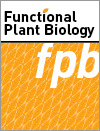FP22012Overview of the roles of calcium sensors in plants’ response to osmotic stress signalling
Calcium signalling involves combining different calcium signatures with various calcium sensors that differ by their expression, subcellular localisation, sensitivity to calcium, and multiples target proteins. The complexity of calcium signalling is also illustrated by the interactions between Ca2+-dependent pathways and Ca2+-independent channels. These calcium sensor proteins can recognise calcium modulations and translate them into a biochemical response.





